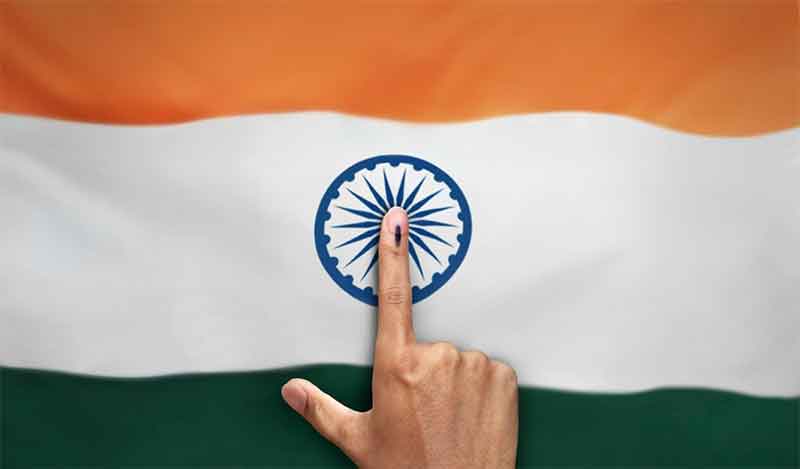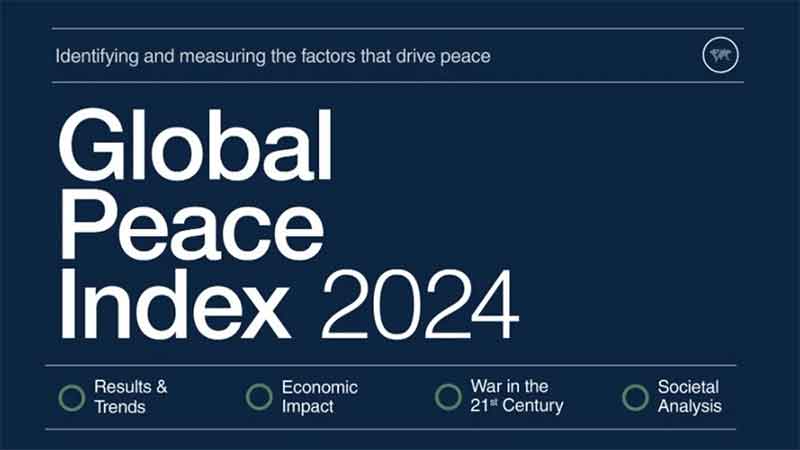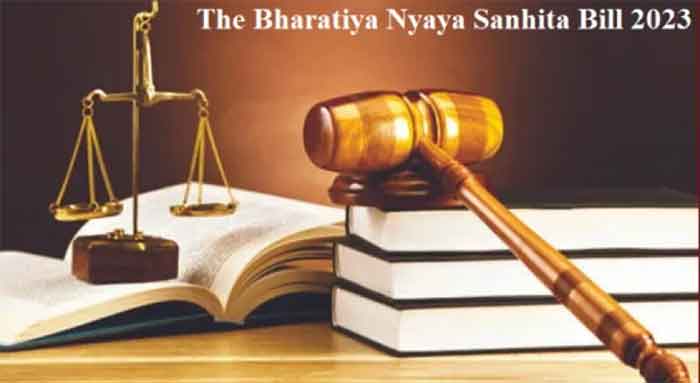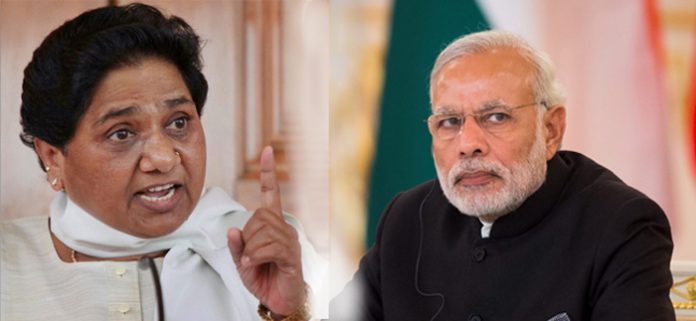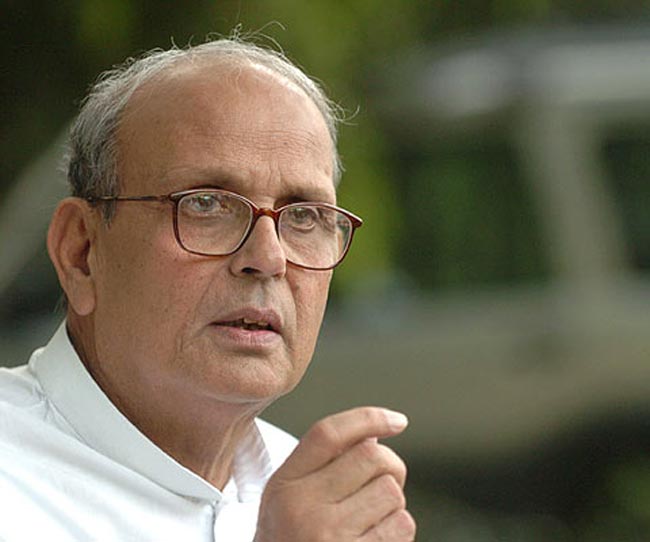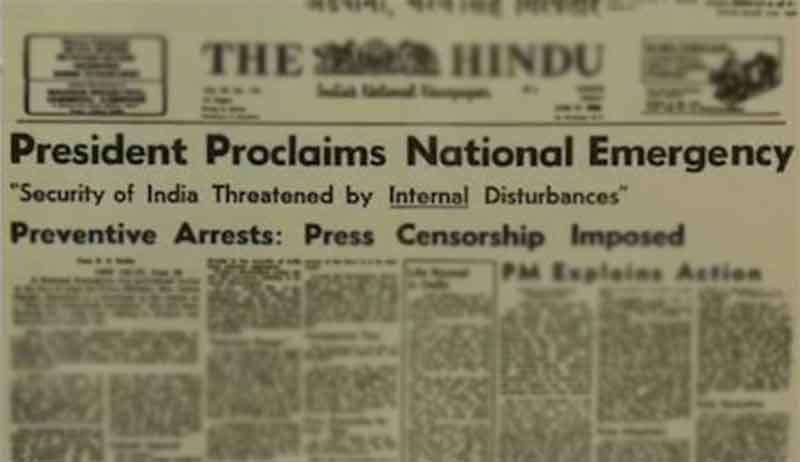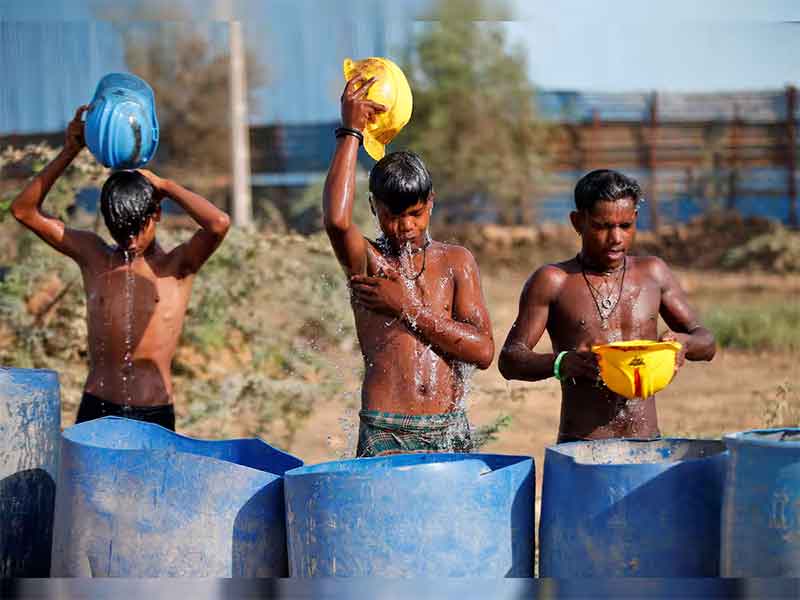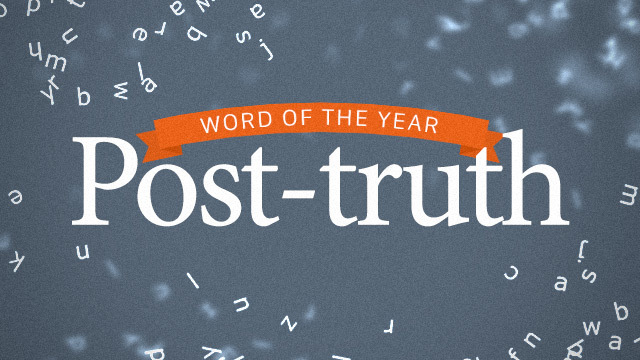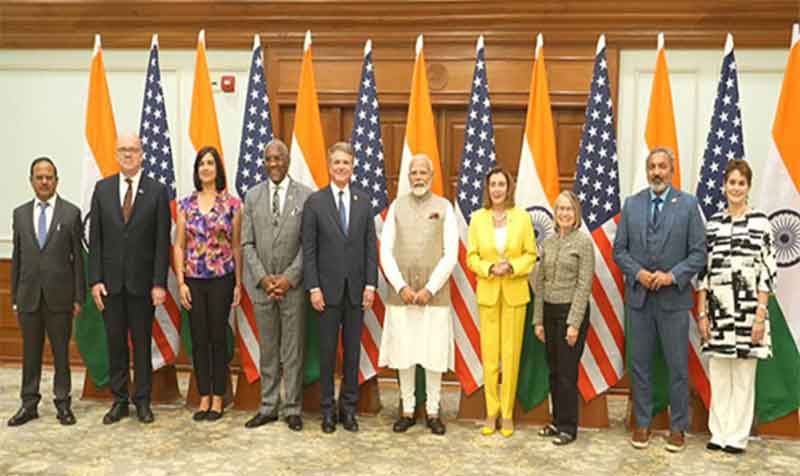In the 2024 Lok Sabha elections, India elected 74 women Members of Parliament (MPs). This is four fewer than in 2019 but significantly more than the mere 22 elected in India’s first general elections in 1952. Despite this increase, women still make up only 13% of the elected strength of the Lower House, far less than the 33% that will be reserved for women after the next delimitation exercise mandated by the Women’s Reservation Bill.
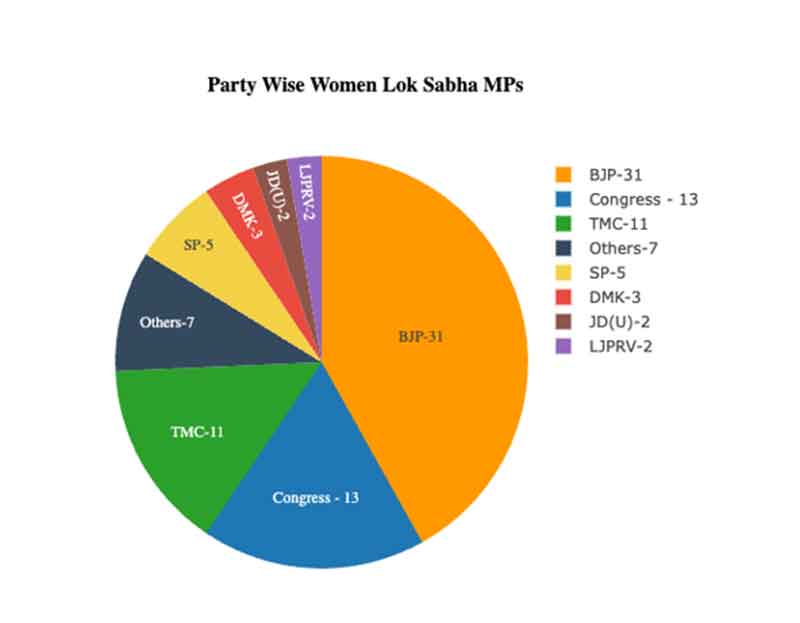
Source : PRS Legislative Research
| Others : JMM ,NCP (SP) , RJD , SAD , Apna Dal , YSRCP , TDP |
Women’s Reservation Bill
The Women’s Reservation Bill, officially known as the Constitution (106th Amendment) Act, 2023, marks a significant milestone in India’s legislative history. This Act reserves one-third of all seats in the Lok Sabha, State legislative assemblies, and the Legislative Assembly of the National Capital Territory of Delhi for women, including those reserved for Scheduled Castes (SCs) and Scheduled Tribes (STs). The reservation will become effective after the publication of the census following the Act’s commencement and will endure for a 15-year period, with potential extensions determined by parliamentary action.
Back in 1979 , India made its first stride toward women’s reservation in legislative bodies, as a signatory, with the Convention on the Elimination of All Forms of Discrimination Against Women (CEDAW). The representation of women in decision-making bodies has seen gradual progress, increasing from 5% in the first Lok Sabha to 15% in the 17th Lok Sabha. Previous attempts to pass similar bills in 1996, 1998, 1999, and 2008 faced various obstacles, with the most recent significant effort being in 2008, which was approved by the Rajya Sabha but lapsed with the dissolution of the 15th Lok Sabha.
A notable aspect of the Bill is the requirement to clear the “Triple Test” laid down by the Supreme Court for OBC reservations in local body elections. This test mandates setting up a commission to examine backwardness, determining the size of the quota based on data, and ensuring that total reservations do not exceed 50%.
At it’s first glance, the Women’s Reservation Bill offers a bundle of possibilities. Firstly, it aims to significantly increase women’s representation in legislative bodies, addressing the current underrepresentation where women constitute only 15% of the Lok Sabha and 9% in state assemblies. This move is a step toward achieving gender equality in political representation, aligning with global standards set by countries with high female parliamentary representation. A diverse legislature with significant female representation can bring a broader range of perspectives, leading to more inclusive policy formulation. Additionally, women’s reservation in politics empowers women, encouraging more participation in politics and other leadership roles. On an outer surface assessment , the greater the number of female legislators, the greater the possibility of effective advocacy for issues directly affecting women, such as gender-based violence, health, education, and economic empowerment.

Source : Lok Sabha
Despite its potential benefits, the Women’s Reservation Bill also faces several criticisms. Firstly, the implementation of the reservation is delayed, as it will only come into effect after a new census and delimitation process, which has been postponed due to the COVID-19 pandemic and other factors. Secondly, the Bill does not provide a specific quota for OBC women, who constitute a significant portion of the population and face multiple forms of discrimination. There is also concern about the potential for tokenism, where women are elected to fulfil quotas but lack real influence or decision-making power. Critics argue that reservations might compromise merit-based selection and cause division in the women’s movement, potentially undermining the quality of legislative representatives. However, this argument of meritocracy is often flawed as it overlooks structural inequalities, implicit biases, and uneven access to resources, which prevent a truly level playing field. Representation is important as it brings diverse perspectives, enhances legitimacy and trust in institutions, and provides role models, thereby serving the needs of all segments of society.
Global Comparisons
In the global landscape of political representation, various approaches have been undertaken to address gender disparities in legislatures. Argentina was the first country to introduce a gender quota law in 1991, requiring that at least 30% of party candidates for legislative elections should be women. This was followed by countries like France implementing the Parity Law in 2000, which mandates that political parties must present an equal number of male and female candidates in elections. In 2014, Mexico, upon its move for gender parity, mandated a representation of 50 percentage in both legislative and municipal elections as well.
As far as our neighbouring countries are concerned, Nepal, for instance, has reserved a notable 33% of its seats for women, reflecting a proactive stance in promoting gender equality. In Bangladesh, 50 out of 350 seats in its Jatiya Sangsad are specifically designated for women, underscoring a concerted effort towards inclusivity. Meanwhile, Pakistan has allocated 17% of seats in its National Assembly to women, indicating a recognition of the need for enhanced female representation. Conversely, countries like Australia, Canada, South Africa, and Sweden have achieved significant female representation in their parliaments without legislatively mandated quotas. Instead, their success can be attributed to the voluntary commitments of political parties, showcasing alternative pathways towards gender parity in political spheres.
Historical and Current Trends in India
The representation of women in the Lok Sabha has fluctuated over the years:
- 1952: Women constituted just 4.41% of the Lower House.
- 2009: Women’s representation crossed the 10% mark.
- 2019: It peaked at 36%.
Despite this progress, India still lags behind countries like South Africa (46%) and the UK (35%). In the 2024 elections, 43 out of 74 women MPs are first-time MPs, higher than the overall percentage of newcomers. Women MPs average 50 years of age, compared to the overall House average of 56 years, and are as educated as their male counterparts, with 78% having completed undergraduate degrees.
Continued Challenges for Women in India
Modern societies increasingly demand gender equality, which is a precondition for genuine democracy. Yet, women are still underrepresented in most parliaments worldwide. According to a 2017 United Nations and Inter-Parliamentary Union (IPU) report, India ranked 148th globally in terms of representation of women in Parliament. Infact, until the 14th Lok Sabha, the representation of women in the lower house of Parliament was less than 10%.
The issue of women’s representation that transcends social class, caste, and community still exists in the second place. Despite the fact that women are represented in politics, the significance of this participation varies depending on the nature of the candidates. For instance, Smriti Irani, the former Indian Minister of Human Resource Development, came under fire for how she handled delicate matters such as the Rohith Vemula case and the JNU students’ union controversy , where it was perceived that she was stifling dissent and falsifying information. Her recent take on period leave policies and her complicity in the protests by women wrestlers had also drawn significant criticism. Similar to this, the new MP Kangana Ranaut, who is well-known for making controversial remarks, came under fire for undermining the legitimacy of farmers’ protests and making derogatory remarks about elderly women farmers. These instances show that having women in positions of authority is not sufficient; rather, real advancement and positive representation depend on the quality and conduct of these representatives.
The IPU’s 2016 self-assessment toolkit for parliaments highlights the importance of gender sensitivity. One significant guideline is to check whether there is a just representation and participation of women and men across all parliamentary bodies and internal structures. An analysis of committee membership data reveals that 13% of female MPs are not members of any department-related standing committee. Notably, the finance committee, with 31 MPs, has no female members. Female MPs are more concentrated in committees related to social justice, human resource development, and chemicals and fertilizers, reinforcing stereotypes about women’s interests.
If we are to truly introduce gender justice to governance, members of the internal structure must represent a greater female presence; only then will true gender-just interactions occur. Until then, the area won’t reflect inclusivity. When there is just one woman holding the highest leadership roles and none at the middle or lower levels, then not much progress is being made in the direction of gender equality.
Participation in Parliamentary Business
Female MPs in India have shown they are equally capable of fulfilling their parliamentary duties as their male counterparts. According to data from PRS Legislative Research for the 16th Lok Sabha (June 1, 2014, to July 31, 2018):
- Female MPs asked 234 questions on average, compared to 236 by male MPs.
- Female MPs participated in 56 debates on average, while male MPs participated in 55.
- Both female and male MPs introduced 1.6 private member bills on average.
A recent study by the United Nations University found that women legislators in India raise economic performance in their constituencies by about 1.8 percentage points per year more than male legislators. Women legislators are more effective at completing road projects and creating infrastructure for growth, challenging the presumption that men are more effective at delivering growth-producing infrastructure.
Conclusion
Moving forward, a multi-pronged approach is essential to enhance women’s political representation and address the challenges they encounter:
- Reservation within Parties: Political parties should commit to reserving a percentage of tickets for women candidates.
- Capacity Building: Training and capacity-building programs can equip women with the skills needed for effective political participation.
- Enforcement of Existing Laws: Strict enforcement of laws against political violence and harassment can create a safer environment for women.
- Economic Support: Financial support and resources for women candidates can help overcome economic barriers.
While the enactment of the Women’s Reservation Act, 2023, is a commendable move, but its linkage with the new delimitation exercise post-2026 suggests that its full impact remains to be seen. Meanwhile, regional parties like the Trinamool Congress (TMC) demonstrate that political will can lead to significant advances in women’s political empowerment, even without legislative mandates. Continued efforts are required to overcome the entrenched challenges and fully realize the potential of women’s representation in India. Citizen initiatives, such as Shakti – Political Power to Women, and the National Association of Women’s Organisations (NAWO), along with others, advocate for policies demanding that women receive half of the election tickets or that the Election Commission of India be given authority to enforce these measures.
Despite the participation of 797 women candidates, representing a slight increase from previous years, only 74 women were elected, reflecting ongoing challenges in achieving gender parity in political representation. Similarly, the representation of minorities, particularly Muslims, remains a significant concern. With only 24 Muslim candidates winning seats out of 78, the numbers reflect a declining trend in Muslim representation in the Lok Sabha.The success of candidates like Iqra Hasan, who ran for the Kairana Lok Sabha seat, is particularly significant in this regard. A young Muslim woman like Iqra’s accomplishment signifies not only a political victory for the Samajwadi Party but also a recognition of her leadership by many facets of society. Similar to this, the victories of the young Dalit Members of Parliament in India, such as Priya Saroj (a Samajwadi MP in Machhlishahr, Uttar Pradesh) and Sanjana Jatav (a Congress MP in Bharatpur, Rajasthan), are tales of optimism that restore our faith in the constitution.
The NDA, led by the BJP, is set to form the government for a third time. However, with a combined strength of 293 Lok Sabha MPs, the NDA does not have a single MP from the Christian, Muslim, or Sikh communities. In fact, the new cabinet has no Muslim representation for the first time in history. This stark lack of diversity highlights the ongoing struggle for adequate representation of women and minorities in India’s parliament. Policies run the danger of marginalizing these populations, escalating social and economic inequality, and compromising the legitimacy of the democratic system in the absence of sufficient representation.
For India to truly embody its democratic ideals, it must strive for a more inclusive parliament where all voices are heard and valued. Achieving this will ensure equitable governance and promote a sense of belonging among all citizens, fostering social cohesion, justice, and sustainable development.
Fathima Althaf is pursuing M.A Development Studies at TISS Mumbai
References
- Rajesh, K. (2018, August 18). Why more women are needed in Parliament. https://www.business-standard.com/article/opinion/why-more-women-are-needed-in-parliament-118081800705_1.html
- Sengupta, A. (2024, June 6). Explained: The representation of women in the incoming Lok Sabha, how it compares to previous years. The Indian Express. https://indianexpress.com/article/explained/slight-dip-in-number-of-women-in-ls-well-under-proposed-33-quota-9374922/
- https://www.theigc.org/sites/default/files/2018/08/Baskaran-et-al-2018-Working-paper.pdf
- Figures created using Pie Chart Maker from Barcelona Field Studies Centre, https://geographyfieldwork.com/PieChartCreator.html
- Home | PRSIndia. (2024). PRS Legislative Research. https://prsindia.org/
- Digital Sansad. (2024). Digital Sansad. https://sansad.in/ls
- https://thewire.in/women/women-parliament-lok-sabha-rajya-sabha-politica-parties
- https://theprint.in/politics/nda-in-18th-lok-sabha-is-minority-mukt-with-no-muslim-christian-or-sikh-mps/2123008/

